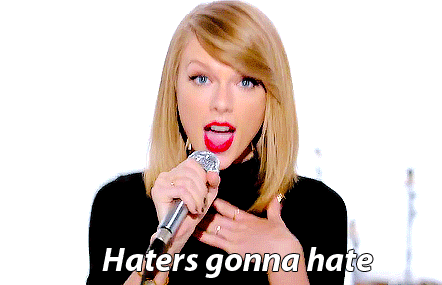Why is Justin Bieber’s work for everyone, but Taylor Swift’s is “girl” music?
As goes the traditional torture of the first day of class, one of my teaching assistants began our time together with an ice breaker. They asked each student to share their name along with their favorite musical artist. In addition to confirming that our wonderful student body holds a much cooler music repertoire than myself, I was also confronted with a glaring observation: music taste seemed to be very evidently skewed by gender. While female-presenting classmates regularly mentioned both male and female artists, my male-presenting classmates almost predominantly selected male singers.
Upon this realization, I began reflecting on its consistency throughout different settings of my life. Whether in school, play or work environments, I have found it to be true (and never questioned) that women tend to be much more open to all media, while men are much more strictly hegemonic.
I’ve noticed that male-identifying individuals show interest in female artists much less enthusiastically or, if at all, only in the context of trying to appeal to their female counterparts. Rather than the casual appreciation which is expressed of most media, feminine artists are either deliberately rejected or promoted based on agenda.
According to Spotify’s Everynoise, a statistical database study on gender, only approximately 18% of music streamed by male users is coming from female or mixed-gendered artists. Conversely, we see that female-identifying users stream upwards of 30% of their music from female or mix gendered artists. While people of all genders are in general more likely to listen to male-created music, the heteronormative skew shows that women are more likely to stream from a wider range of gendered sources. Moreover, analysis also shows that even the most successful female artists have significantly female-dominated fanbases. For example, although Taylor Swift is among the top 5 overall streamed artists on Spotify, her streaming population is approximately 60% female.
This data demonstratively confirms the massive discrepancy between what types of media different consumer groups gravitate toward along the lines of gender. Why is it that male singers create music for everyone, while women are creating “girly” content?
The seemingly easy explanation for gender preference is self-recognition: when individuals can identify with the experiences and perspectives of a piece of art, they are much more likely to enjoy it. Is it that female-created music centers around more gender-specific experiences, innately narrowing its audience? Maybe, but in reality, the stories of male-produced music are also heavily gendered — the difference seems to be that consumers are more accepting of this, even when it diverges from their own identity.
The true answer lies not at all in the content itself, but in the rigid gender binary system in which we live. On the axis of gender definition, “male” and “female” are not defined equally, but in hierarchical opposition to one another, with the former at the top of the power structure. Essentially, our society reinforces the idea that masculinity is not obtained independently, but through the rejection of feminine qualities. While women feel comfortable and even garner status by consuming “masculine” media, being effeminate is a connotative insult. Femininity is a threat to power in this precariously designed system of gender constructs.
In addition to its social ramifications, these media disparities also reflect systemic issues in the music industry regarding support for female artists. Because positions of power in both the production and promotion sects of music are traditionally held by men, female artists face a double boundary in pursuing success.
While art is an independent medium meant to be enjoyed by all, it becomes shrouded in the societal discourse of gender expectations. Much like the stereotypical taboo that “boys can’t wear pink,” these notions limit freedom of expression, produce an environment of judgment and ultimately reinforce the patriarchy.
This is not to say that no men enjoy female-produced music or that those who do should be celebrated as ringleaders of feministic empowerment. Instead, listening habits stand as proof of how social preference reflects the gender hierarchy.





